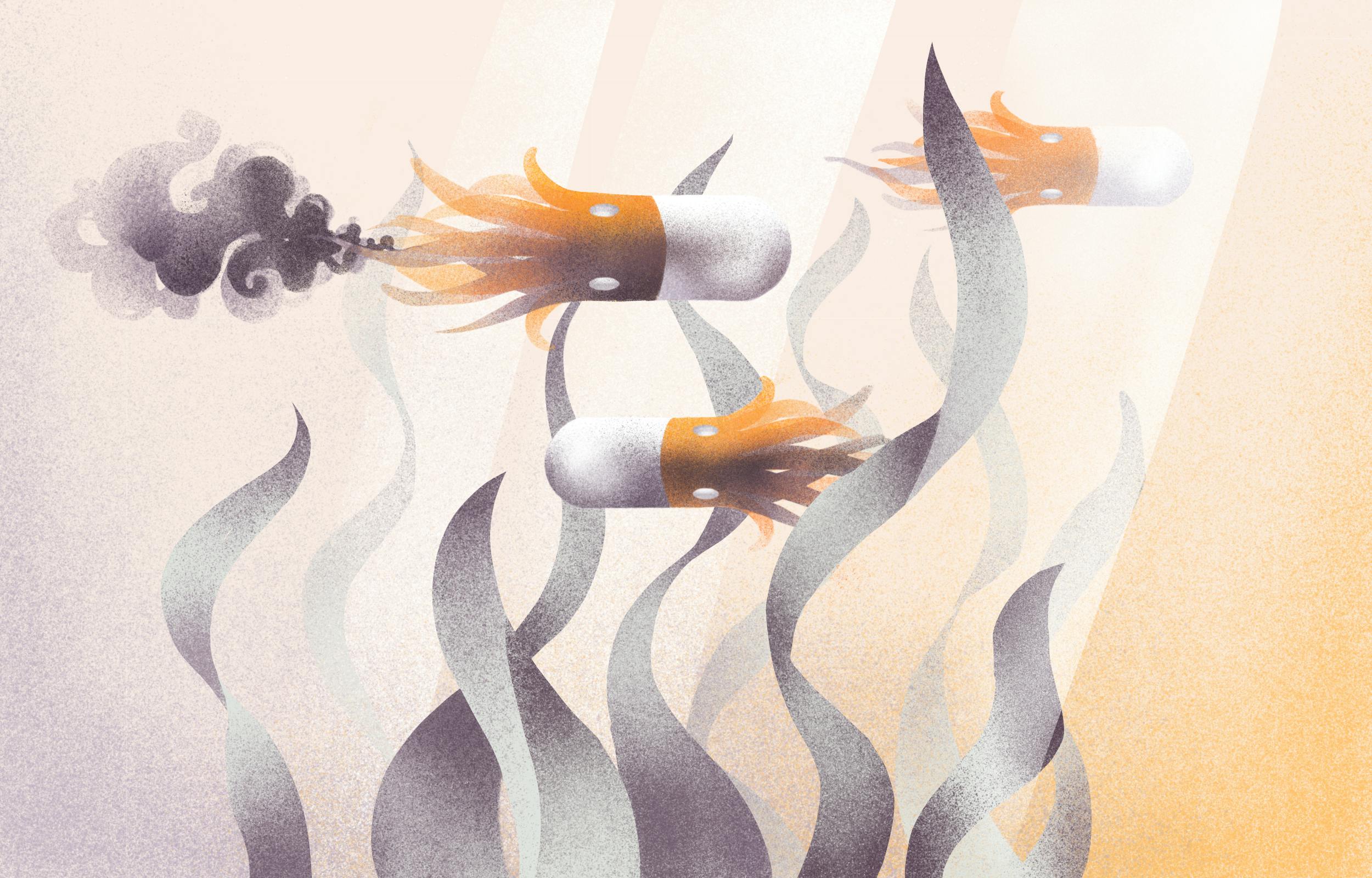A new device takes inspiration from an unexpected sea creature
There are many reasons to hate needles beyond injections and IVs being uncomfortable.
IVs, for one, are an imperfect drug delivery method—one with a risk of infection and dependent on the presence of a trained professional. Not to mention the recent extreme weather-related IV fluid shortage in the U.S.
However, IVs are still a necessary evil especially for administering biologic drugs, which are generally too large to be delivered orally.
Now, bioengineers may have found a solution to this problem. Their inspiration lives under the sea.

The story: A group of researchers has developed a device modeled after cephalopods—like squid—to be able to administer biologic drugs orally.
- After being swallowed, the pill-sized device uses cephalopod-inspired jets modeled to propel the drug to the right location in the digestive tract. It releases the drug much like a squid releases ink.
- Another version of the device is tethered, allowing for endoscopic applications of the microjet devices in the clinic.
Faster drug delivery: This novel drug delivery method takes the best of both worlds from oral and IV delivery pathways.
- Oral drugs are convenient (and painless), but much of the drug gets lost along the way through the digestive process. Much less ends up in the bloodstream as compared to intramuscular injection or IV-administered drugs, and the drug’s effects take longer to pan out.
- With an IV, despite the drawbacks, researchers and clinicians alike can count on 100% of the drug making it directly into the bloodstream. And for it to happen fast.
- In testing the squid-inspired device on a pig, the researchers successfully made over 10% of the drug bioavailable, which is much more than a standard pill can do.
More research is necessary to see how this approach can work for different substances and whether such a device can be used for recurring drug delivery, such as daily drugs patients take for years.
But for now, we’re excited bioengineers have unlocked a new drug delivery method to iterate on.
When can we be done with needles?: Not so fast. Though we’re far for throwing away syringes and IV lines, this invention continues to signal just how much of a hurdle needles can be—whether it’s because of vaccine hesitancy, drug administering errors, or clinician shortages.
Some of the other needle-alternative innovation pathways we have eyes on include:
- Needle-free vaccines, including ultrasound-guided delivery
- Needle-free injectable drugs, such as the Neffy epinephrine nasal spray
- The finger-prick blood test in the post-Theranos era
To address our evolving medical landscape, we need to think outside the box for even our most entrenched, basic technologies. Patients and clinicians expect better—medtech can deliver it.